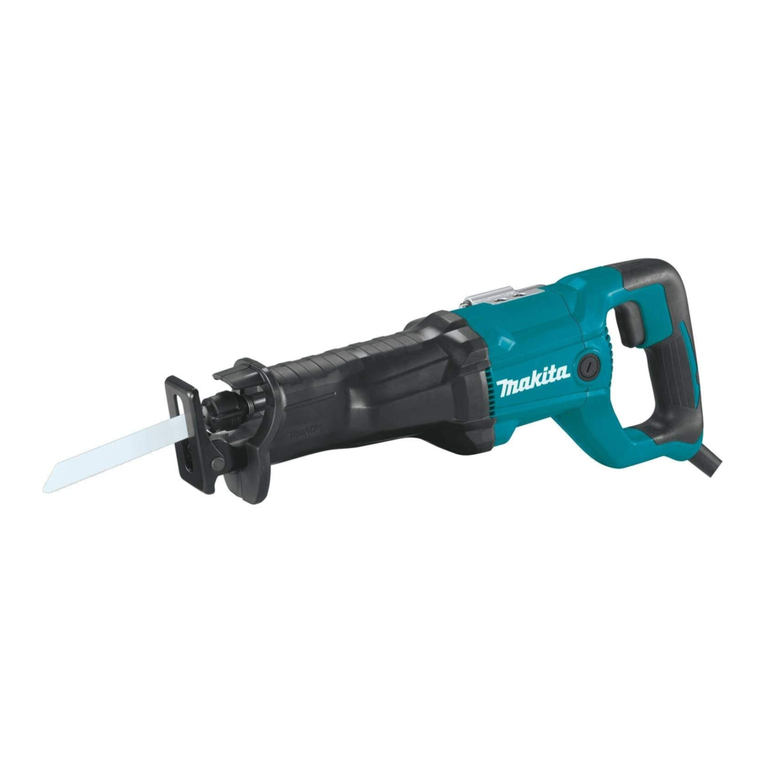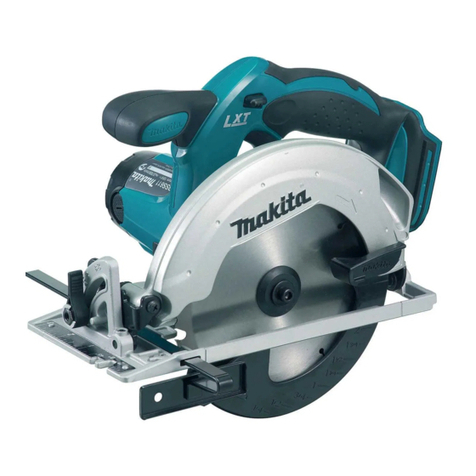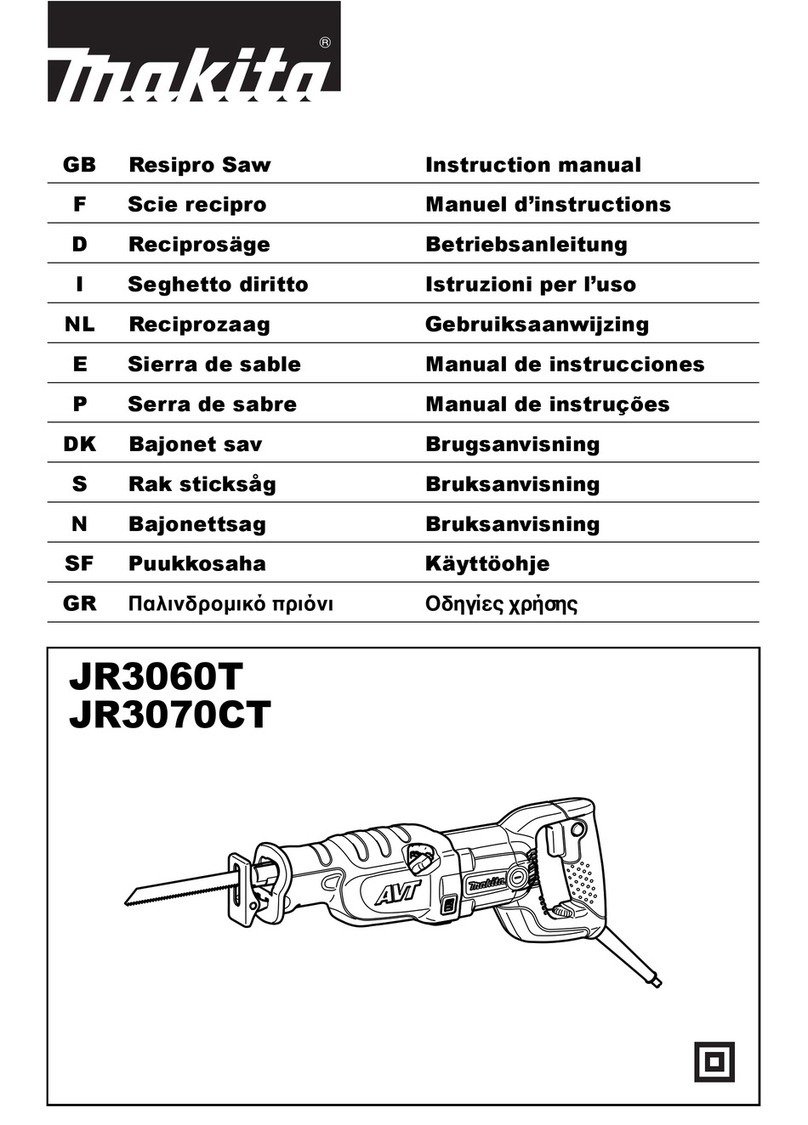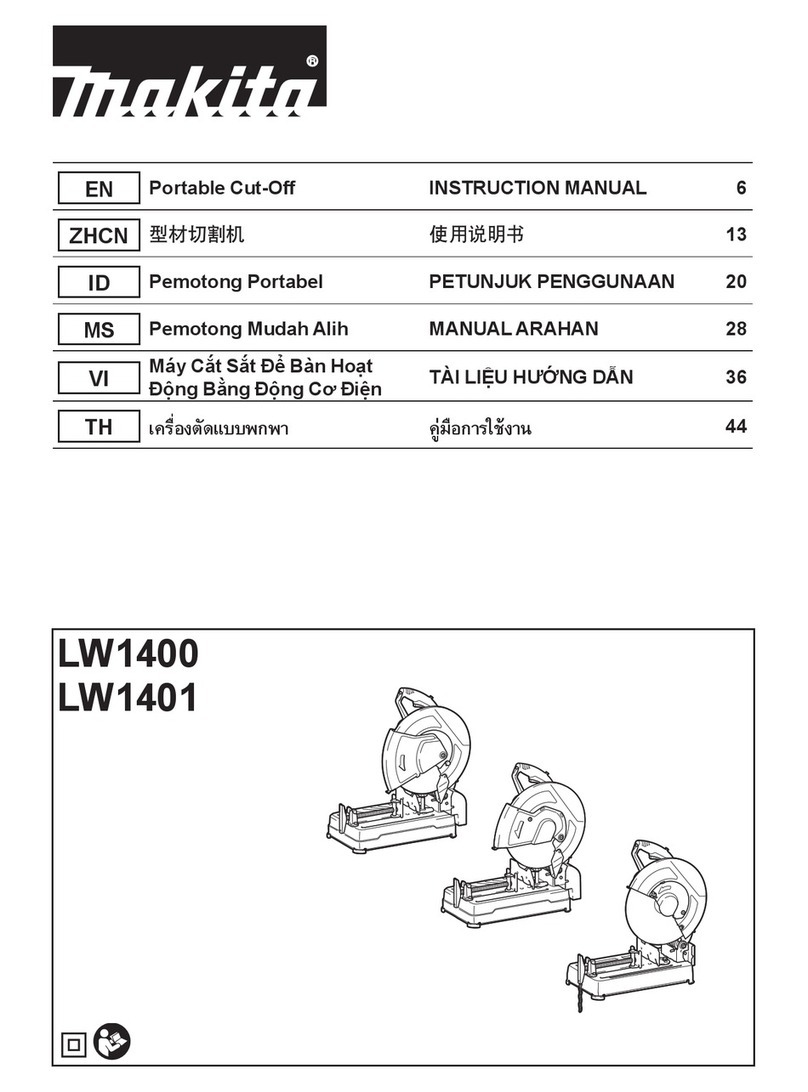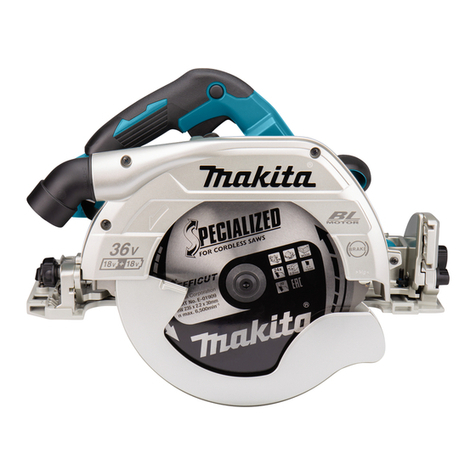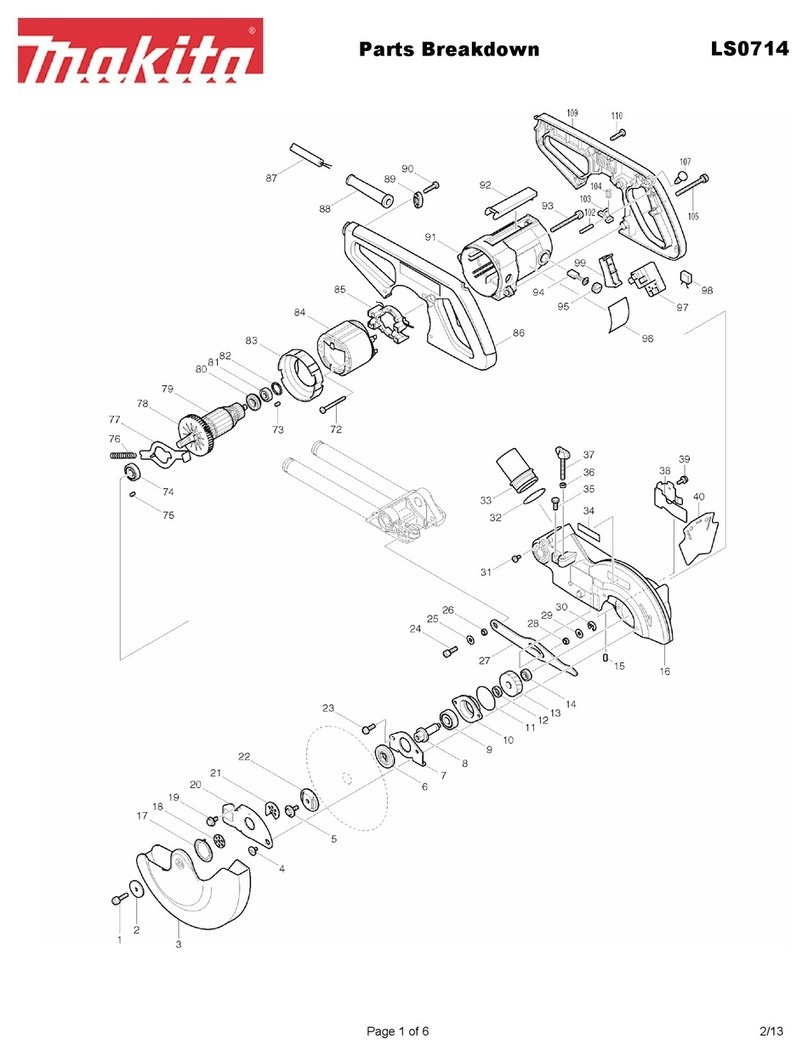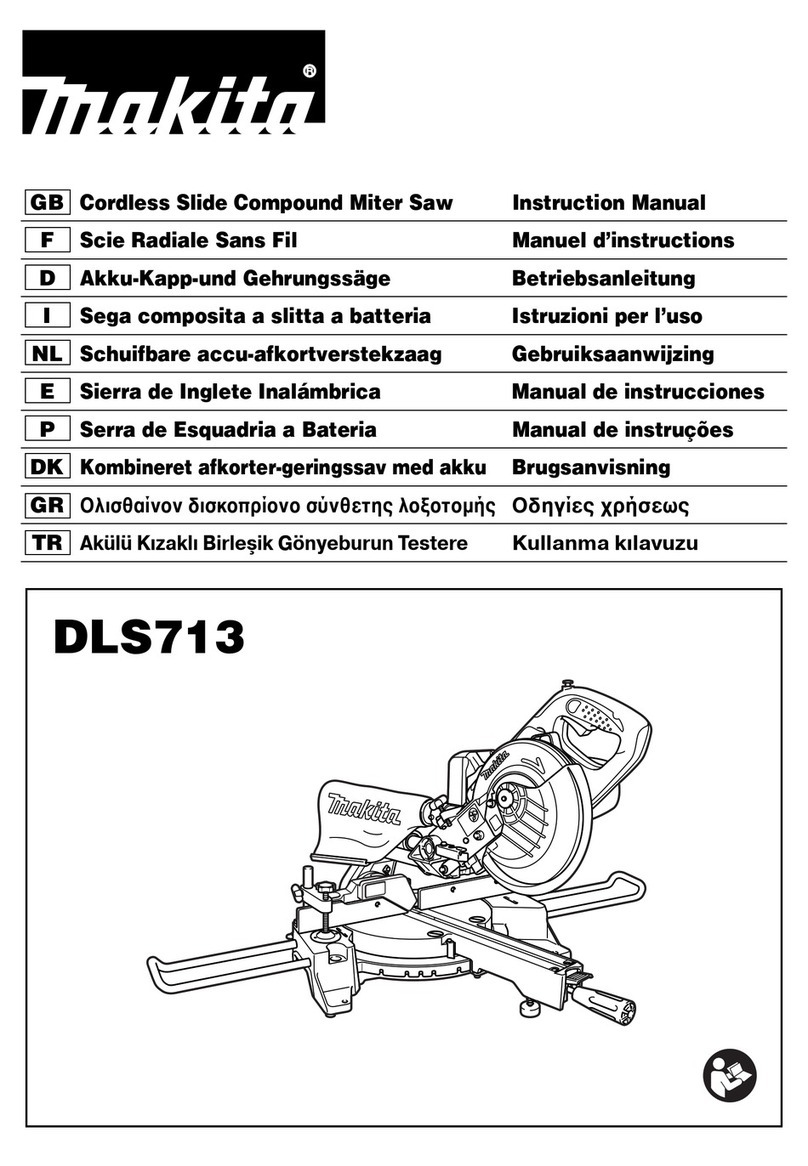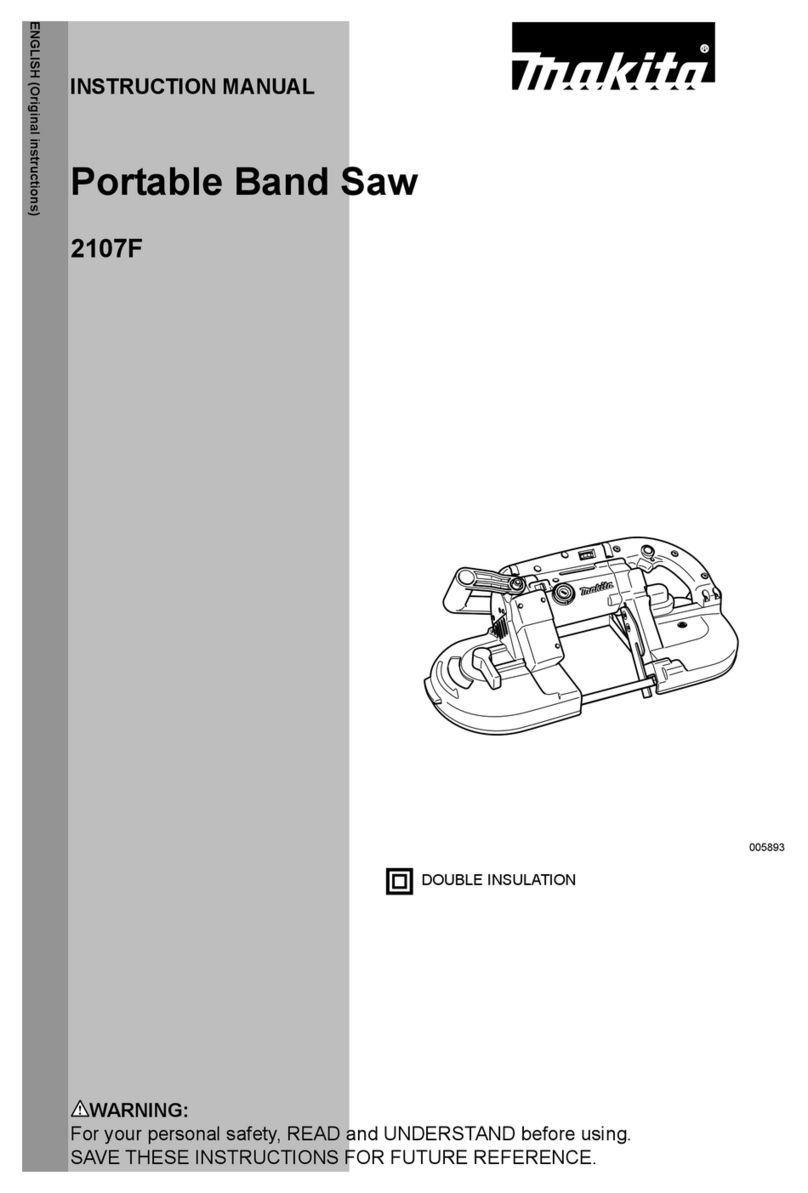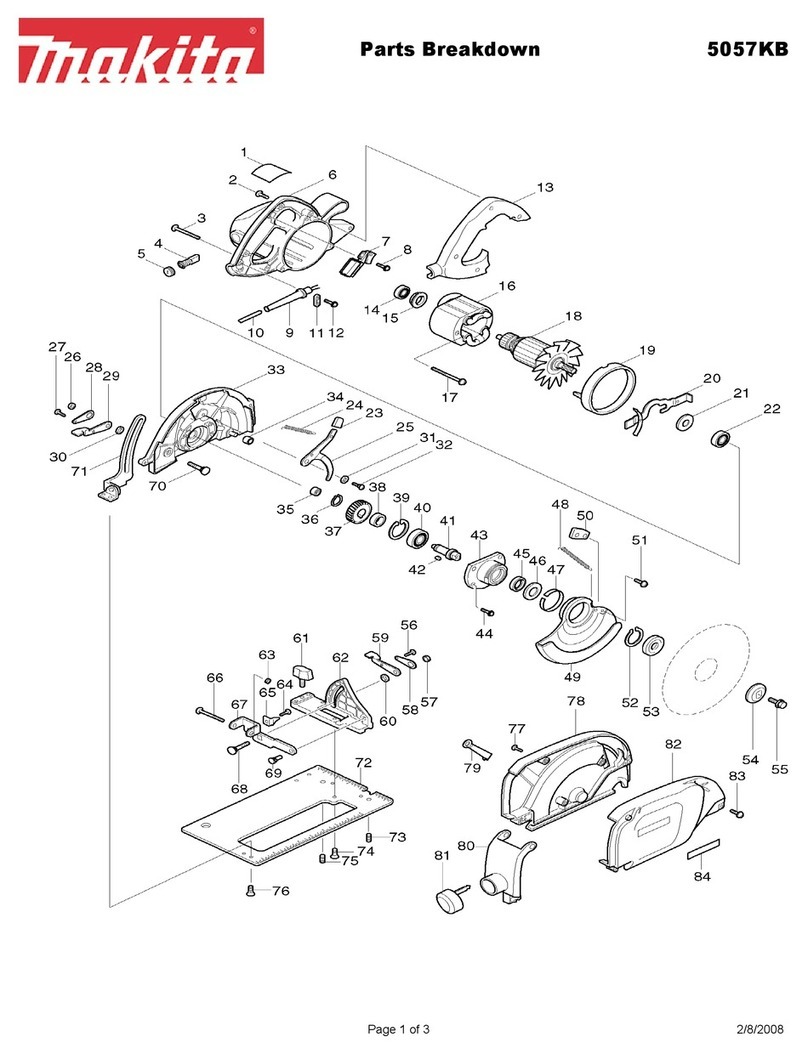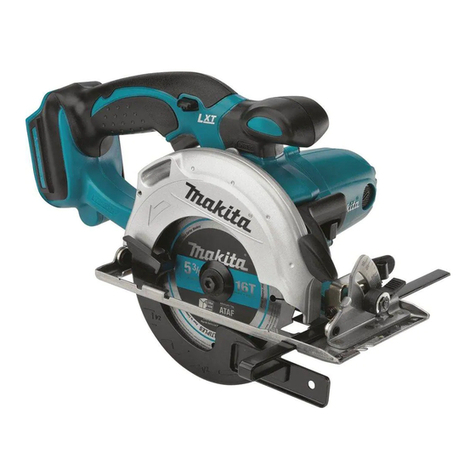
10
causing blade movement and severe vibration
resulting in possible loss of control during
operation and in serious personal injury.
Hex wrench storage
Fig.11
When not in use, store the hex wrench as shown in the
figure to keep it from being lost.
Connecting a vacuum cleaner
Fig.12
Fig.13
When you wish to perform clean cutting operation,
connect a Makita vacuum cleaner to your tool. Install
the dust nozzle on the tool using the screw. Then
connect a hose of the vacuum cleaner to the dust
nozzle as shown in the figure.
OPERATION
CAUTION:
• Always insert the battery cartridge all the way until
it locks in place. If you can see the red part on the
upper side of the button, it is not locked completely.
Insert it fully until the red part cannot be seen. If
not, it may accidentally fall out of the tool, causing
injury to you or someone around you.
• Be sure to move the tool forward in a straight line
gently. Forcing or twisting the tool will result in
overheating the motor and dangerous kickback,
possibly causing severe injury.
• If the tool is operated continuously until the battery
cartridge has discharged, allow the tool to rest for
15 minutes before proceeding with a fresh battery.
Fig.14
Hold the tool firmly. The tool is provided with both a front
grip and rear handle. Use both to best grasp the tool. If
both hands are holding saw, they cannot be cut by the
blade. Set the base on the workpiece to be cut without
the blade making any contact. Then turn the tool on and
wait until the blade attains full speed. Now simply move
the tool forward over the workpiece surface, keeping it
flat and advancing smoothly until the sawing is
completed.
To get clean cuts, keep your sawing line straight and
your speed of advance uniform. If the cut fails to
properly follow your intended cut line, do not attempt to
turn or force the tool back to the cut line. Doing so may
bind the blade and lead to dangerous kickback and
possible serious injury. Release switch, wait for blade to
stop and then withdraw tool. Realign tool on new cut
line, and start cut again. Attempt to avoid positioning
which exposes operator to chips and wood dust being
ejected from saw. Use eye protection to help avoid
injury.
Rip fence (Guide rule)
Fig.15
The handy rip fence allows you to do extra-accurate
straight cuts. Simply slide the rip fence up snugly
against the side of the workpiece and secure it in
position with the screw on the front of the base. It also
makes repeated cuts of uniform width possible.
MAINTENANCE
CAUTION:
• Always be sure that the tool is switched off and the
battery cartridge is removed before attempting to
perform inspection or maintenance.
• Never use gasoline, benzine, thinner, alcohol or
the like. Discoloration, deformation or cracks may
result.
Adjusting for accuracy of 90° and 45° cut
(vertical and 45° cut)
For Model BSS610
This adjustment has been made at the factory. But if it is
off, adjust the adjusting screws with a hex wrench while
inspecting 90° or 45° the blade with the base using a
triangular rule or square rule, etc.
Adjusting for accuracy of 90° cut
(vertical cut)
For Model BSS611
This adjustment has been made at the factory. But if it is
off, adjust the adjusting screws with a hex wrench while
inspecting 90° the blade with the base using a
triangular rule or square rule, etc.
Fig.16
Fig.17
Replacing carbon brushes
Fig.18
Remove and check the carbon brushes regularly.
Replace when they wear down to the limit mark. Keep
the carbon brushes clean and free to slip in the holders.
Both carbon brushes should be replaced at the same
time. Use only identical carbon brushes.
Use a screwdriver to remove the brush holder caps.
Take out the worn carbon brushes, insert the new ones
and secure the brush holder caps.
Fig.19
To maintain product SAFETY and RELIABILITY, repairs,
any other maintenance or adjustment should be
performed by Makita Authorized Service Centers,
always using Makita replacement parts.


